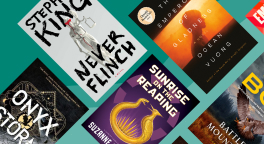Probability Theory: Basic Concepts - Limit Theorems Random Processes
Select Format
Select Condition 
You Might Also Enjoy
Book Overview
The aim of this book is to serve as a reference text to provide an orientation in the enormous material which probability theory has accumulated so far. The book mainly treats such topics like the founda- tions of probability theory, limit theorems and random processes. The bibliography gives a list of the main textbooks on probability theory and its applications. By way of exception some references are planted into the text to recent papers which in our opinion did not find in monographs the attention they deserved (in this connection we do not at all want to attribute any priority to one or the other author). Some references indicate the immediate use of the material taken from the paper in question. In the following we recommend some selected literature, together with indications of the corresponding sections of the present reference book. The textbook by B. V. Gnedenko, "Lehrbuch der Wahrscheinlichkeits- theorie ", Akademie-Verlag, Berlin 1957, and the book by W. Feller, "IntroductioI). to Probability Theory and its Applications", Wiley, 2. ed., New York 1960 (Chapter I, 1 of Chapter V) may serve as a first introduction to the various problems of probability theory. A large complex of problems is treated in M. Loeve's monograph "Probability Theory", Van Nostrand, 2. ed., Princeton, N. J.; Toronto, New York, London 1963 (Chapters II, III, 2 Chapter VI). The foundations of probability theory are given in A. N. Kolmogorov's book "Grund- begriffe der Wahrscheinlichkeitsrechnung", Springer, Berlin 1933.
Format:Paperback
Language:English
ISBN:3642879365
ISBN13:9783642879364
Release Date:May 2012
Publisher:Springer
Length:406 Pages
Weight:1.29 lbs.
Dimensions:0.9" x 6.1" x 9.2"
Customer Reviews
5 customer ratings | 5 reviews
There are currently no reviews. Be the first to review this work.


































